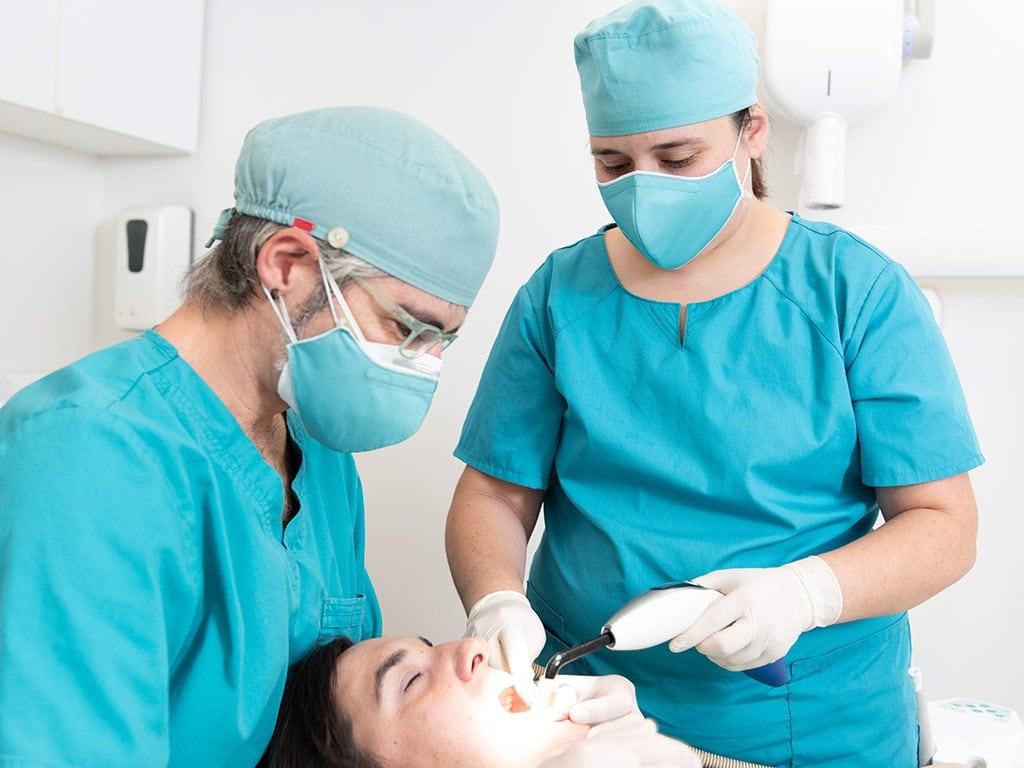Understanding Sedation Therapy
Sedation therapy is a way to help those with anxiety relax for a dentist to comfortably and effectively perform a dental procedure. It can be done for highly anxious people, for children who can’t stay still, and for those with developmental problems who would otherwise be difficult to perform dental procedures on.
Those who know they have anxiety typically discuss these options with the dentist or office staff before procedures.

Benefits of Using Sedation Therapy
Sedation therapy can turn an unpleasant dental office experience into a more pleasant one. It can help relax a patient where the dentist can easily work on teeth and yet still communicate with the patient.
What Sedation Involves
There are several types of sedation therapies available and you can choose the right one for you. These types of therapies can include pills to swallow like triazolam and diazepam, nitrous oxide you breathe in (commonly called laughing gas), or fluids given to you through an IV line into your arm.
The IV method is the standard practice for most sedation therapy protocols although you can talk to your dentist about each and what you prefer.


What You Will Experience
Sedation therapy is described as a twilight sleep. It is minimal where you can respond to questions and requests from dental staff. Some people require a deeper level of sedation and will need more to stimulate a response.
However, sedation doesn’t include deep sleep. It will always be a light enough sleep to respond to questions. Deep sleep is general anesthesia and is rarely used in dental procedures.
Effects of Sedation
Sedation therapy can do many things for a patient including reducing anxiety and pain. It also prevents the patient from remembering anything unpleasant from the procedure. It also makes it easier for the dentist to work on the patient as they don’t tense up.
It’s a tool for quick, easier procedures. Complex surgeries require general anesthesia.

Procedures Where Sedation Is Used
Various types of dental surgeries can benefit from sedation therapy. This includes extractions, root canals, installing an implant, and even deep cleaning your teeth.
The decision of when to use sedation therapy is left to the patient and what they feel they can endure without anxiety.
No Lasting Effects
Sedation therapy typically doesn’t leave any lasting side effects. The patient may leave the office feeling a little tired. However, those patients using sedation therapy should have someone else drive them home.

Four Steps in Sedation Therapy
1. Consultation
The first step in getting sedation therapy is to consult with your dentist before making an appointment for the procedure. The dentist will look at any medications or supplements you’re using and will review your medical history to advise which are best for you.
2. Fasting
You will be advised to not consume anything, either food or drink, for six hours before your appointment for the procedure. However, you should continue to take your prescriptions unless your dentist advises otherwise.

3. Taking the Therapy
The dentist may give you pills to reduce the pain and then have a staff administer the nitrous oxide or the IV. Each case is different. The dentist will still use a local anesthetic to numb the area where the procedure is done. This happens after the sedatives start working.
Staff will continue to monitor your blood pressure, heart rate, and oxygen throughout the procedure.
4. After Care
You will need a good friend to drive you home and help you to your bed or couch. The best thing you can do is rest after you get home until the medication wears off. Drinking water and other nutritious fluids will help you feel better also.
You may continue to take pain medicine after your procedure. Be sure to talk to your dentist about when to start with pain medicine after you get home so it doesn’t mix with the sedation therapy chemicals.
Schedule a Consulation about a Sedation Therapy
Frequently Asked Questions About Sedation Therapy
Are there risks to sedation therapy?
Sedation therapy is generally low-risk. Some of the risks are continued drowsiness, nausea, headaches, and dry mouth.
Is sedation therapy safe for kids?
Yes, sedation therapy is safe for children but may have some short-term side effects including irritability, fever, and nausea.
Can pregnant women have sedation dentistry?
Pregnant women shouldn’t have sedation therapy and most dentists recommend waiting until after birth to have a procedure using sedation therapy.